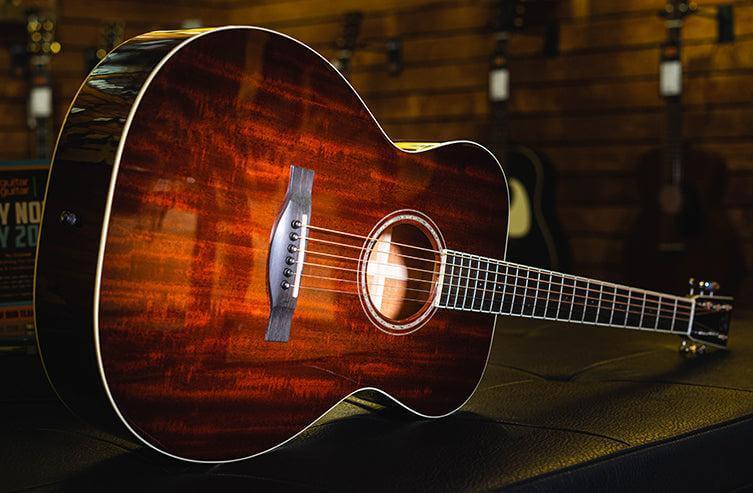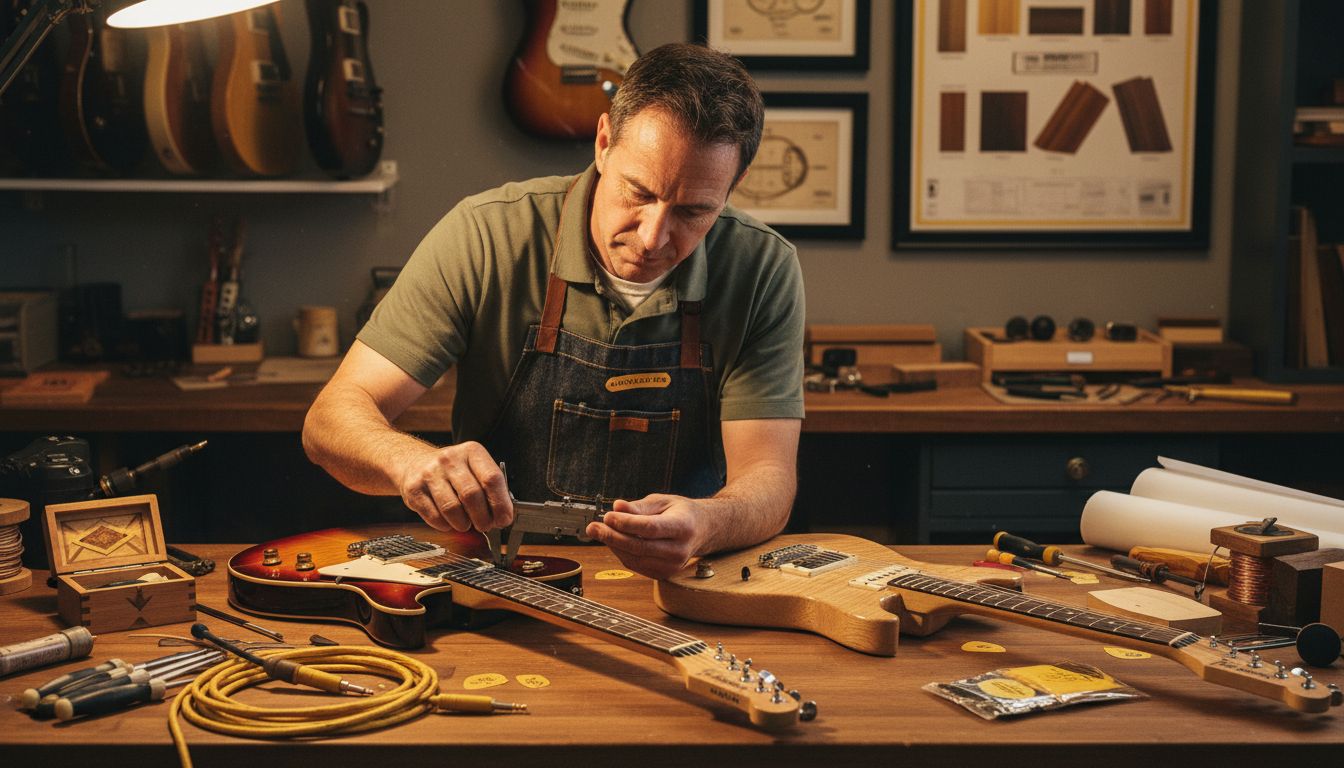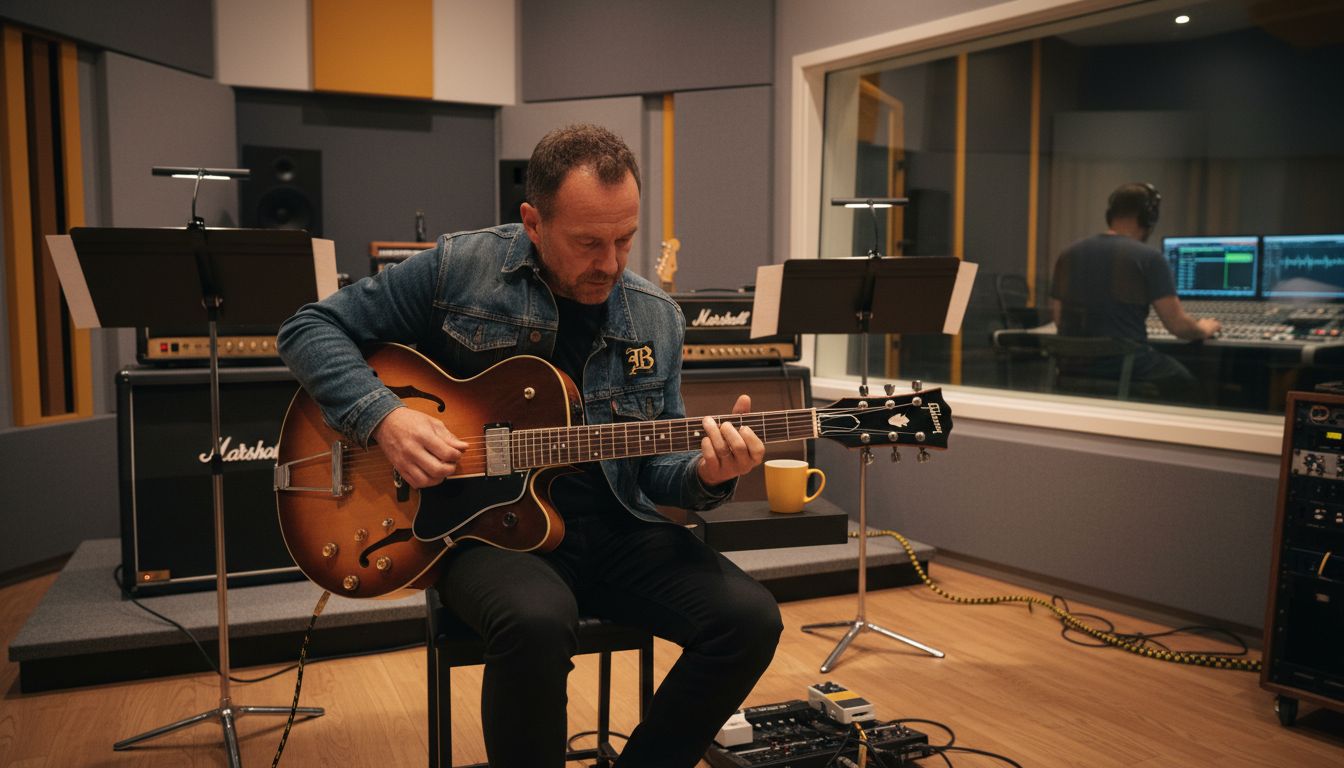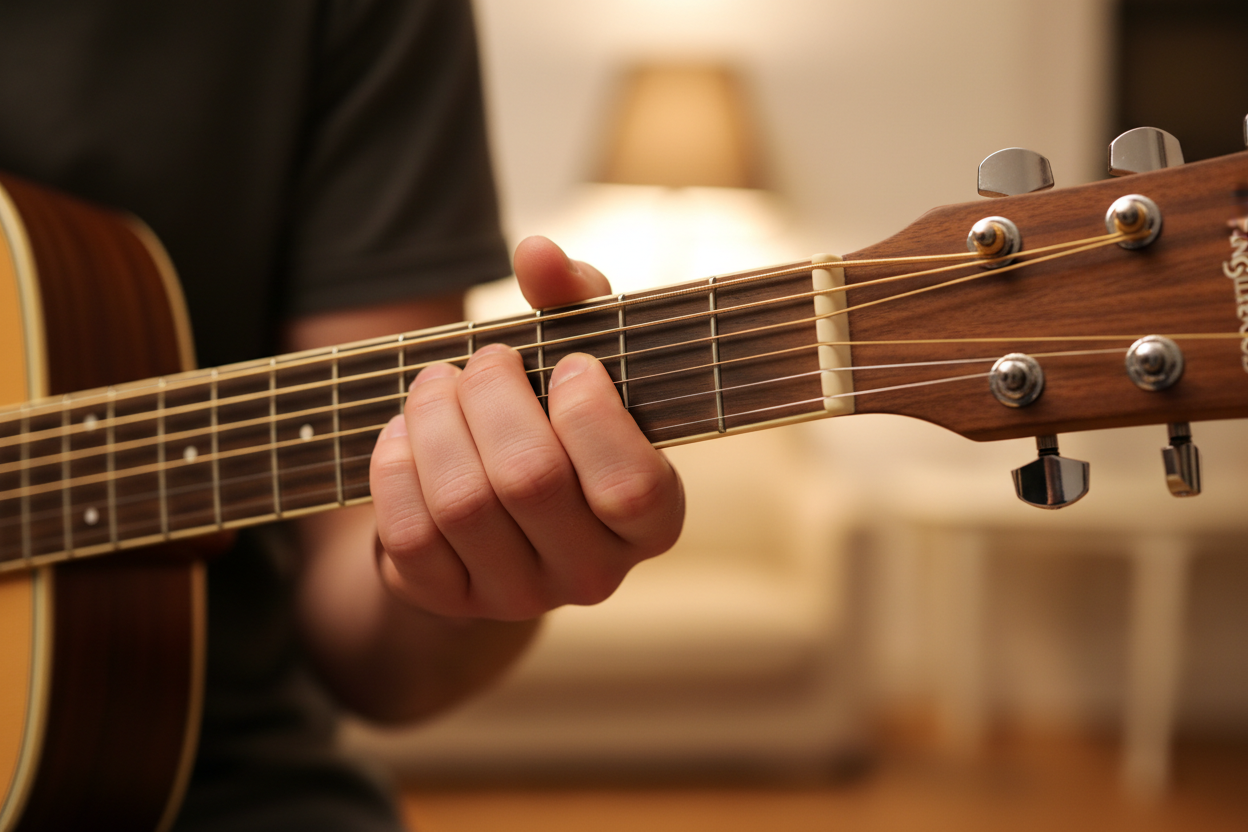When you search for acoustic guitars online, most lists shout about the “best” or “top-rated” models. But here’s the thing - those aren’t always the guitars that give you the most value. Some brilliant instruments slip under the radar simply because they don’t carry the big-name hype. These are what many players call the most underrated acoustic guitars.
For guitarists in the UK - whether you’re just starting out, a hobbyist, or even someone gigging on weekends - finding these hidden gems can make a big difference. You’ll often get solid tonewoods, comfortable playability, and long-lasting build quality at a fraction of the cost of the usual favourites. And that’s what this guide is about: shining a light on the guitars that deserve more credit than they get.
Factors That Make a Guitar Underrated
A guitar is often called underrated when it offers great sound, solid build, or real value for money but doesn’t get the recognition it deserves. This usually has less to do with the guitar itself and more to do with how the market sees it. Here are the main reasons:
1. Sound vs. Price Value
Many players assume that higher price always equals better sound. In reality, some mid-range acoustics with solid spruce or mahogany tops deliver tone and resonance that rival guitars costing twice as much. The value-for-money factor often goes unnoticed because people expect “cheap” to mean “bad.”
2. Brand Perception Bias
Big names like Martin or Taylor dominate the conversation, so smaller or local brands often get overlooked. Boutique UK makers, for example, can produce beautifully crafted instruments but don’t have the marketing budget to match the global giants.
3. Playability & Comfort
An acoustic guitar should feel comfortable in your hands - neck shape, action height, and overall balance can make more difference than the logo on the headstock. Yet, many guitars that excel in playability are ignored simply because they’re not a famous brand.
4. Unique or Non-Traditional Design
Some models use alternative tonewoods or have non-traditional looks. While they may sound brilliant, players chasing “classic” aesthetics often skip over them. This makes otherwise high-quality guitars slip under the radar.
5. Limited Visibility
If a guitar isn’t widely stocked in big retail chains or doesn’t have aggressive advertising behind it, it’s less likely to appear on “top 10” lists. That doesn’t make it less capable - just less visible.
The Most Underrated Acoustic Guitars
Yamaha FG800 Black (~£300)
Why It’s Underrated
The FG800 carries a lot of history. Yamaha first introduced the FG series in 1966 to prove that a quality acoustic didn’t need to break the bank. Over the years, the FG line became a go-to for countless musicians starting their careers. Despite its legacy and dependable build, the FG800 often gets overshadowed by flashier brands or higher-priced models - yet it still offers brilliant tone and reliability at an affordable price.
Key Specs
- Body Shape: Traditional Western (dreadnought style)
- Top: Solid Spruce
- Back & Sides: Nato/Okume
- Neck: Nato, matte finish
- Fingerboard & Bridge: Rosewood
- Scale Length: 650mm (25 9/16")
- Nut Width: 43mm (1 11/16")
- Hardware: Die-cast chrome tuners, black pickguard
- Finish: Gloss black body with black/white binding
- Electronics: None (pure acoustic)
True & Fair View
- Pros: Solid spruce top at this price point is rare; reliable Yamaha craftsmanship; classic dreadnought projection with clear mids; comfortable neck profile for both strumming and fingerpicking.
- Cons: Nato/Okume back and sides don’t have the depth of higher-end tonewoods like rosewood; no built-in electronics may limit stage use; black gloss shows fingerprints easily.
-
Verdict: For around £300, the Yamaha FG800 is a workhorse acoustic that punches above its weight. It’s perfect for beginners, hobbyists, and even gigging musicians on a budget - but it rarely gets the spotlight it deserves in “best guitar” lists.
Seagull S6 Original (~£500)
Why It’s Underrated
The Seagull S6 has been a favourite among working musicians for decades, yet it rarely makes the big-brand “top lists.” Built in Canada from sustainable woods, it delivers a warm, rich sound and solid craftsmanship that rivals more expensive models. Its unique design choices - like a smaller headstock and use of wild cherry wood - sometimes put off traditional buyers, but those same features give the S6 its distinct tone and character.
Key Specs
- Body Shape: Dreadnought
- Top: Solid Cedar
- Back & Sides: Wild Cherry
- Neck: Silver Leaf Maple, semi-gloss finish
- Fingerboard & Bridge: Rosewood
- Scale Length: 631 mm
- Frets: 21
- Hardware: Chrome, marbled-effect pickguard
- Finish: Semi-gloss natural
True & Fair View
- Pros: Warm and balanced tone; cedar top shines for fingerpicking but also handles strumming well; sustainable Canadian build quality; projection suits singer-songwriters.
- Cons: Wild cherry wood is less common and not as hyped as rosewood or mahogany; larger dreadnought body may feel bulky for smaller players; resale value lower compared to big names.
- Verdict: At around £500, the Seagull S6 Original is one of the best “hidden gems” in the acoustic world - versatile, sustainable, and beautifully voiced, even if it doesn’t always get mainstream attention.
Epiphone Hummingbird Studio (~£400)
Why It’s Underrated
The Hummingbird is one of Gibson’s most famous acoustics, seen on countless stages since the 1960s. The Epiphone Hummingbird Studio brings that same iconic look and sound to players at a much more accessible price. Despite its heritage, many guitarists still dismiss Epiphone as “just the budget Gibson brand,” which means the Studio version often flies under the radar - even though it delivers a classic tone, striking design, and gig-ready electronics for under £500.
Key Specs
- Body Shape: Square-shouldered Hummingbird dreadnought
- Top: Solid Spruce
- Back & Sides: Mahogany
- Neck: Mahogany, SlimTaper “D” profile
- Fingerboard & Bridge: Pau Ferro
- Scale Length: 24.7"
- Frets: 20 Medium Jumbo
- Nut Width: 43mm
- Hardware: Grover Rotomatic tuners (18:1), nickel finish
- Electronics: Fishman Sonicore pickup + Sonitone soundhole-mounted controls
- Finish: Gloss, Hummingbird pickguard with graphics
True & Fair View
- Pros: Affordable way to get the Hummingbird look and feel; warm mahogany body with bright spruce top gives a balanced tone; comfortable neck profile; built-in Fishman pickup makes it stage-ready straight out of the box.
- Cons: Pau Ferro fingerboard doesn’t have quite the same feel as rosewood; some players still see Epiphone as “lesser” compared to Gibson; gloss finish and decorative pickguard may not suit those after a minimalist look.
- Verdict: The Epiphone Hummingbird Studio is a standout choice at around £400, versatile enough for both fingerpicking and strumming, with the added bonus of plug-in electronics. It’s unfairly overlooked because of brand perception, but in practice it’s one of the best value stage-ready acoustics in its range.
Maton SRS60C (~£1,529)
Why It’s Underrated
The Maton SRS60C comes from Australia’s respected Solid Road Series, first introduced in 2011. Built entirely from solid timbers and fitted with Maton’s renowned AP5 pickup system, it’s designed as a stage-ready workhorse. Despite its professional build quality and unique Australian tonewoods, the SRS60C is often overlooked in the UK, where American and Japanese brands dominate the spotlight. Its use of Queensland maple and - more recently, Bunya pine tops makes it stand out, but also keeps it in “niche” territory for many players unfamiliar with these woods.
Key Specs
- Body Shape: Cutaway dreadnought
- Top: Solid Spruce (recent builds transitioning to Bunya Pine)
- Back & Sides: Solid Queensland Maple
- Neck: Queensland Maple (C-shape)
- Fingerboard & Bridge: Rosewood
- Nut & Saddle: Bone
- Scale Length: Standard (full size)
- Hardware: Chrome Grover tuners, chrome end-pin
- Electronics: Maton AP5 pickup system with onboard controls
- Finish: Natural satin
True & Fair View
- Pros: All-solid construction at the “entry” level of Maton’s pro range; Queensland maple gives a bright yet warm balance between mahogany and maple; AP5 system is highly regarded for live use; handmade attention to detail.
- Cons: Price point (£1,500+) places it outside the casual buyer’s range; tonewoods like Queensland maple and Bunya pine are less familiar to UK players, which can put some off; limited availability in UK shops compared to Yamaha, Taylor, or Martin.
- Verdict: The Maton SRS60C is a professional-grade electro-acoustic that delivers premium tone and unbeatable stage reliability. It’s underrated mainly because it’s an Australian brand with less presence in the UK market - but for players who value projection, clarity, and sustainability, it’s one of the strongest choices in its price range.
Auden Austin Cutaway Electro-Acoustic (~£900–£1,200)
Why It’s Underrated
Auden is a UK-based boutique guitar maker that doesn’t have the same global recognition as Yamaha, Taylor, or Martin. That lack of brand presence keeps models like the Austin Cutaway under the radar, despite offering premium build quality and advanced electronics. The inclusion of the Brad Clark Super preamp system — with switchable modes for strumming, fingerpicking, or solo work — makes this guitar stage-ready, yet many UK players overlook it simply because Auden isn’t a household name.
Key Specs
- Body Shape: Grand Auditorium (Cutaway)
- Top: AAA Spruce
- Back & Sides: African Mahogany
- Neck: African Mahogany
- Fingerboard & Headplate: Ebony
- Bridge Pins & Detailing: Ebony with Maple accents
- Nut & Saddle: Bone
- Scale Length: 650mm
- Nut Width: 43mm
- Hardware: Shertler 18:1 tuners
- Electronics: Brad Clark Super preamp (4 programmable tone settings, onboard EQ)
- Finish: Satin black
- Case: Vintage Grey hard case included
True & Fair View
- Pros: Boutique, handmade quality; versatile Brad Clark Super preamp system makes it ideal for live use; premium tonewoods (spruce/mahogany/ebony) deliver a balanced, professional sound; comes with a high-quality case.
- Cons: Price places it closer to premium models, which can deter players unfamiliar with Auden; satin black finish may divide opinion; limited retail availability outside specialist UK shops like MusicStreet.
- Verdict: The Auden Austin Cutaway Electro-Acoustic is a serious player’s guitar, refined, versatile, and stage-ready. It’s underrated because boutique UK brands don’t have the global marketing push of the big names, but for those who try it, it often rivals or even surpasses more famous competitors in the same price range.
Conclusion
Underrated acoustic guitars prove that you don’t always need to chase the biggest names to get incredible tone and playability. From solid spruce-topped workhorses to boutique UK-built gems, these instruments often deliver more value than their more famous rivals - they just don’t always get the spotlight.
For UK players, the key is knowing where to look. That’s where Music Street comes in. Based in Cambridgeshire, we focus on carefully curated brands like Auden, Seagull, Maton, Yamaha, and Epiphone - guitars that are chosen not for hype, but for the way they sound, feel, and inspire. Whether you’re after your first serious acoustic or a stage-ready electro, our team will help you find the hidden gem that fits your style and budget.
So, if you’re ready to try something beyond the usual big-name lists, come and explore our collection online or visit us in-store. You might just find your next favourite guitar among the most underrated acoustics out there.
Frequently Asked Questions
1. What is the easiest acoustic guitar size to play?
Smaller body shapes like parlour or concert-sized guitars are easier for beginners and players with smaller hands. They’re lighter, more comfortable to hold, and don’t require as much reach as full dreadnoughts.
2. Do acoustic guitars sound better with age?
Yes, in many cases. As the wood on an acoustic guitar dries and vibrates over time, the tone often opens up and becomes richer. This is especially true for solid-wood tops like spruce or cedar.
3. How long should an acoustic guitar last?
With proper care, a quality acoustic guitar can last decades. Regular string changes, humidification, and keeping it in a case when not in use help extend its life. Many well-maintained guitars remain playable for 30–50 years or more.
4. Can you play any style of music on an acoustic guitar?
Absolutely. While some body shapes and tonewoods suit certain genres better (like dreadnoughts for strumming or concert bodies for fingerpicking), a versatile acoustic guitar can handle folk, rock, pop, blues, and even light jazz.
5. Do I need electronics in an acoustic guitar?
Not always. If you mainly play at home or casually with friends, a pure acoustic is fine. But if you plan to perform live or record, having a built-in pickup system makes it easier to amplify without extra gear.




Share:
Top 10 best songs to play on an acoustic guitar
Easy Christmas Music Guitar Chords for Beginners